Introduction
Facial cleansing is more than just a daily habit—it’s the cornerstone of healthy, glowing skin. A well-chosen cleanser not only removes impurities but also lays the foundation for a skincare routine that works harmoniously with your skin’s unique needs. This guide unpacks everything you need to know about facial cleansers, from the types available and their unique benefits to expert advice on selecting the perfect match for your skin type.
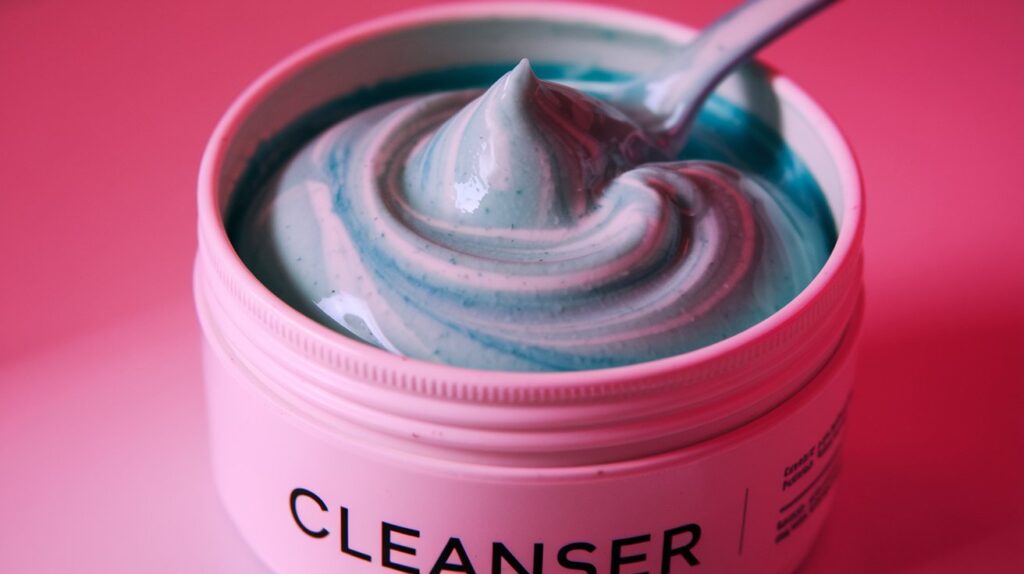
Table of Contents
Understanding Facial Cleansers
What Are Facial Cleansers?
Facial cleansers are skincare products designed to remove dirt, oil, makeup, and other impurities from the skin’s surface. Unlike ordinary soaps, cleansers are formulated to clean without disrupting the skin’s natural moisture barrier or causing irritation. They come in various forms, such as gels, creams, foams, and oils, each tailored to address specific skin concerns.
A good cleanser does more than clean—it prepares your skin for the next steps in your routine, ensuring other skincare products like serums and moisturizers are absorbed more effectively.
Why Is Cleansing Essential?
Cleansing is the foundation of any skincare routine, offering numerous benefits:

- Removes Impurities: Throughout the day, your skin is exposed to pollutants, sweat, and oil buildup. Cleansing clears these impurities, reducing the risk of clogged pores and breakouts.
- Balances Skin’s pH: The skin has a natural pH that supports its barrier function. Proper cleansing helps maintain this balance, ensuring the skin remains healthy and resilient.
- Prepares Skin for Skincare: A clean face allows active ingredients in other products to penetrate deeply, maximizing their effectiveness.
- Supports Skin Renewal: Cleansing promotes the removal of dead skin cells, encouraging cell turnover and leaving the skin looking fresh and vibrant.
Types of Facial Cleansers
Facial cleansers come in various forms, each offering unique benefits for different skin types and concerns. Understanding these types can help you select the most suitable one for your skincare needs.
Overview of Facial Cleanser Types
| Type | Description | Best Suited For |
|---|---|---|
| Gel | Deep cleansing, oil control | Oily, acne-prone skin |
| Cream | Hydrating, nourishing | Dry, sensitive skin |
| Foam | Light lather, effective cleansing | Combination skin |
| Micellar | Gentle, no-rinse | Sensitive or all skin types |
| Clay | Detoxifying, oil-absorbing | Oily, combination skin |
| Oil | Makeup removal, hydration | All skin types |
| Powder | Exfoliating, gentle cleansing | Oily, sensitive skin |
| Bar | Soap-free, hydrating | Dehydrated or sensitive skin |
Gel Cleansers
- Benefits: Ideal for deep cleansing and controlling excess oil, gel cleansers often contain acne-fighting ingredients like salicylic acid. They help unclog pores without over-drying the skin.
- Recommended Ingredients: Salicylic acid, tea tree oil, aloe vera.
- Usage Tips: Use twice daily for best results, focusing on oily or acne-prone areas.
- The Benefits of Gel Cleansers, Ingredients, and Usage Tips
Cream Cleansers
- Benefits: These cleansers have a rich, creamy texture that hydrates while cleansing, making them perfect for dry or sensitive skin.
- Recommended Ingredients: Hyaluronic acid, ceramides, shea butter.
- Usage Tips: Apply with gentle circular motions and rinse with lukewarm water to prevent moisture loss.
Foam Cleansers
- Benefits: Foam cleansers create a rich lather that effectively lifts away dirt and oil, making them great for combination skin. However, they can sometimes strip natural oils.
- Recommended Ingredients: Amino acids, glycerin.
- Usage Tips: Follow up with a hydrating toner or moisturizer to replenish the skin barrier.
Micellar Cleansers
- Benefits: Micelles attract and trap impurities like dirt and makeup without the need for rinsing, making these cleansers gentle and versatile.
- Recommended Ingredients: Glycerin, chamomile extract.
- Usage Tips: Use a cotton pad soaked in micellar water to cleanse; ideal for quick refreshes or travel.
Clay Cleansers
- Benefits: Formulated with clay to absorb excess oil and detoxify the skin, these cleansers are excellent for oily or combination skin types.
- Recommended Ingredients: Kaolin clay, bentonite clay.
- Usage Tips: Use 2-3 times a week to avoid over-drying.
Oil Cleansers
- Benefits: Oil-based cleansers dissolve makeup, sunscreen, and impurities without disrupting the skin’s moisture barrier. They’re suitable for all skin types, including oily skin.
- Recommended Ingredients: Jojoba oil, argan oil, sunflower seed oil.
- Usage Tips: Massage onto dry skin, then emulsify with water before rinsing.
Powder Cleansers
- Benefits: These transform into a creamy consistency when mixed with water, providing both gentle exfoliation and effective cleansing.
- Recommended Ingredients: Rice powder, enzymes.
- Usage Tips: Use once daily or a few times a week depending on your skin’s sensitivity.
Bar Cleansers
- Benefits: Modern bar cleansers are soap-free and enriched with hydrating ingredients, offering convenience and a low-waste alternative.
- Recommended Ingredients: Glycerin, olive oil, shea butter.
- Usage Tips: Store in a dry area to maintain longevity and avoid bacterial growth.
Benefits of Facial Cleansers
Thorough Cleansing
Facial cleansers remove dirt, makeup, and pollutants accumulated throughout the day, leaving the skin refreshed and ready for other skincare products.
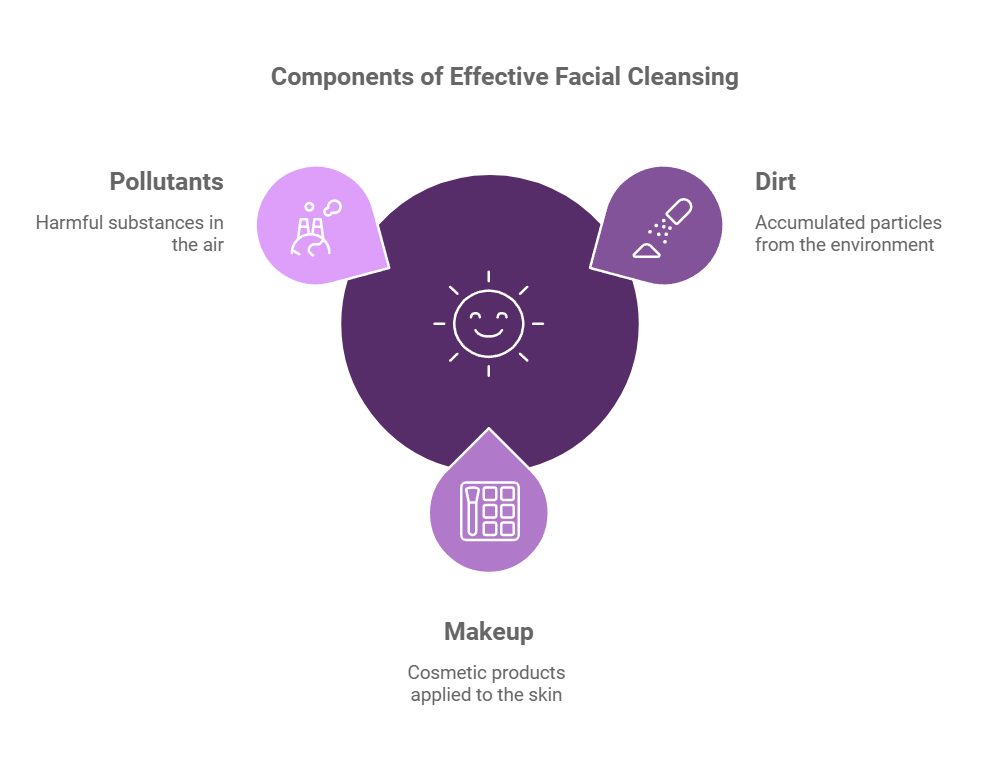
Prevention of Acne
Cleansers play a key role in preventing acne and minimizing breakouts by unclogging pores and reducing oil buildup.
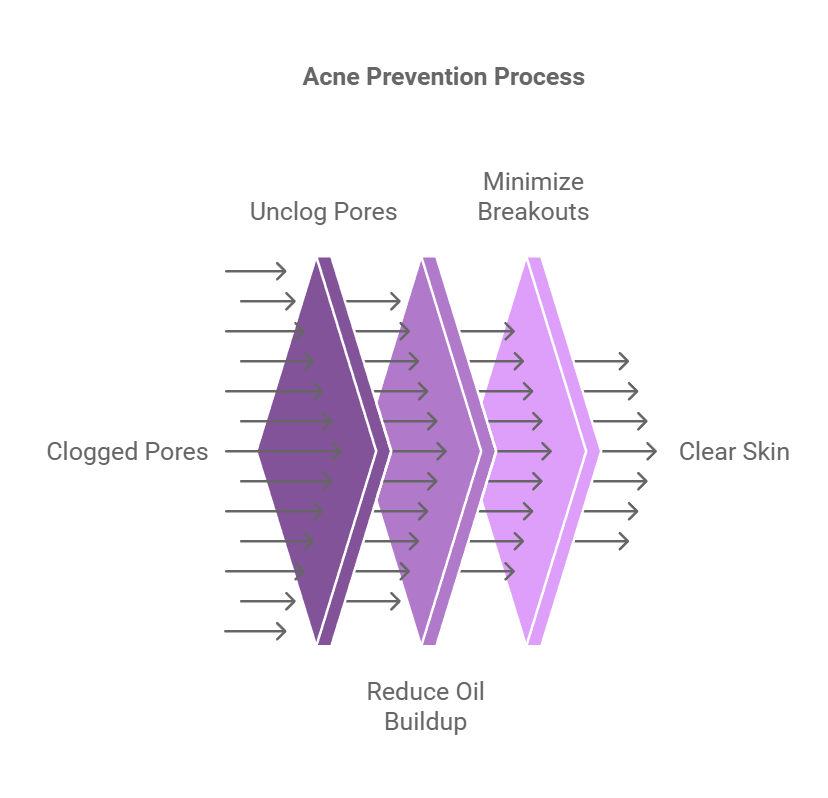
Enhancing Skincare
Clean skin allows for better absorption of serums, moisturizers, and other treatments, maximizing their effectiveness.
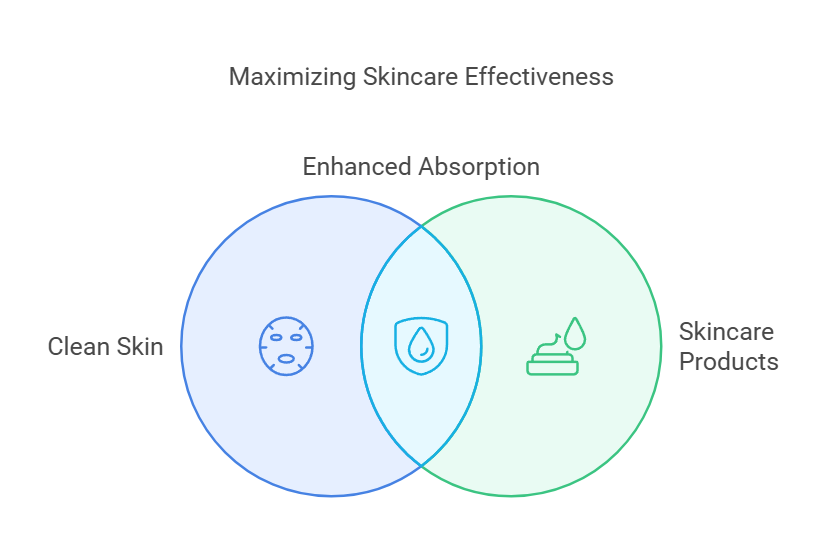
Balanced Skin Health
Cleansers help maintain the skin’s natural barrier and pH level, ensuring it remains hydrated, protected, and healthy over time.

How to Choose the Right Cleanser
Selecting the perfect facial cleanser requires understanding your skin’s unique needs and aligning them with the right product. Here’s a step-by-step guide to make an informed choice:
Step 1: Know Your Skin Type
Identifying your skin type is the foundation for choosing an effective cleanser.
Oily Skin:
Symptoms:- Shiny appearance, enlarged pores, frequent breakouts.
Dry Skin:
Symptoms:- Tight, flaky, or rough texture, prone to irritation.
Sensitive Skin: Easily irritated, redness, stinging sensations with harsh products.
Combination Skin: Oily in the T-zone (forehead, nose, chin), dry on the cheeks.
Step 2: Identify Skin Concerns
Different cleansers are formulated to address specific skin issues. Match your concerns with the appropriate cleanser:
- Acne or Breakouts: Gel or foam cleansers with salicylic acid or tea tree oil.
- Dryness: Cream or oil-based cleansers with hyaluronic acid or ceramides.
- Sensitivity: Micellar or cream cleansers with soothing ingredients like aloe vera or chamomile.
- Dullness: Powder or exfoliating cleansers with rice powder or enzymes.
Step 3: Analyze Ingredients
The right ingredients can make all the difference in your skincare routine.
- Salicylic Acid: For acne control.
- Hyaluronic Acid: For hydration.
- Glycerin: For moisture retention.
- Aloe Vera: For soothing sensitivity.

- Ingredients to Avoid:
- Alcohol: Can dry out the skin.
- Fragrances: May cause irritation for sensitive skin.
- Sulfates: Can strip the skin’s natural oils.
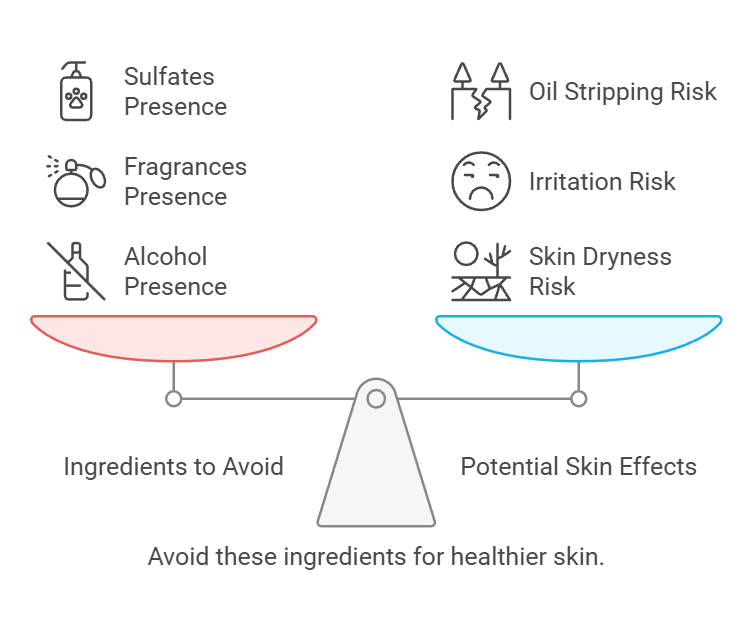
Step 4: Test Before You Buy
Patch testing is crucial to avoid adverse reactions.
- Apply a small amount of cleanser to the inside of your wrist or behind your ear.
- Wait for 24-48 hours to observe any irritation, redness, or itching.
- If no reaction occurs, the cleanser is likely safe for your skin.
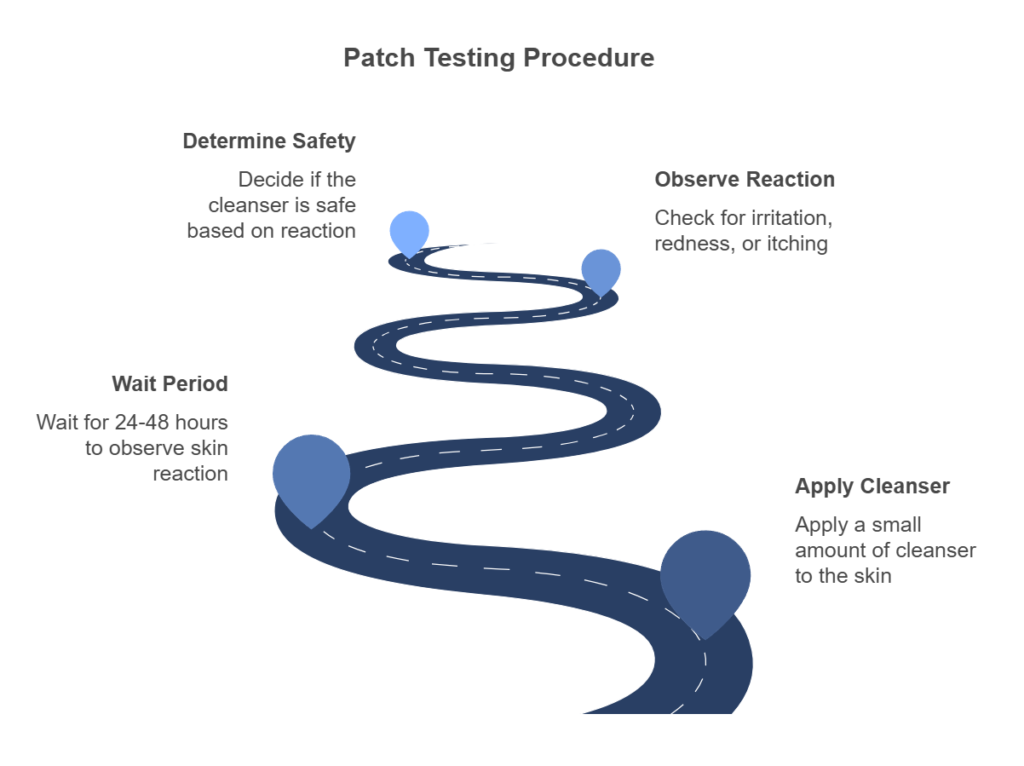
Conclusion
Facial cleansing is the foundation of a healthy skincare routine, offering more than just a clean face—it prepares your skin for hydration, nourishment, and overall health. By understanding the various types of facial cleansers, their benefits, and how to choose the right one for your unique needs, you can create a skincare regimen that truly works for you.
Remember, your skin is as unique as you are, and the right cleanser can make all the difference in achieving that radiant, glowing complexion. Take the time to evaluate your skin type, concerns, and preferences to make informed decisions. With the insights shared in this guide, you’re now equipped to choose the perfect facial cleanser and take your skincare routine to the next level.
FAQs
Can You Use More Than One Type of Cleanser?
Yes! Many people use multiple cleansers to address different needs, such as a gel cleanser for oily days and a cream cleanser during dry seasons.
What is Double Cleansing, and Is It Necessary?
Double cleansing involves using an oil-based cleanser to remove makeup and sunscreen, followed by a water-based cleanser to clean the skin thoroughly. It is highly beneficial for those who wear heavy makeup or sunscreen daily.
How Often Should You Cleanse Your Face?
It’s recommended to cleanse your face twice a day:
- Morning: To remove overnight oils and prep the skin.
- Evening: To remove dirt, makeup, and impurities accumulated during the day.
However, adjust based on your skin’s needs—over-cleansing can strip the skin’s natural barrier.




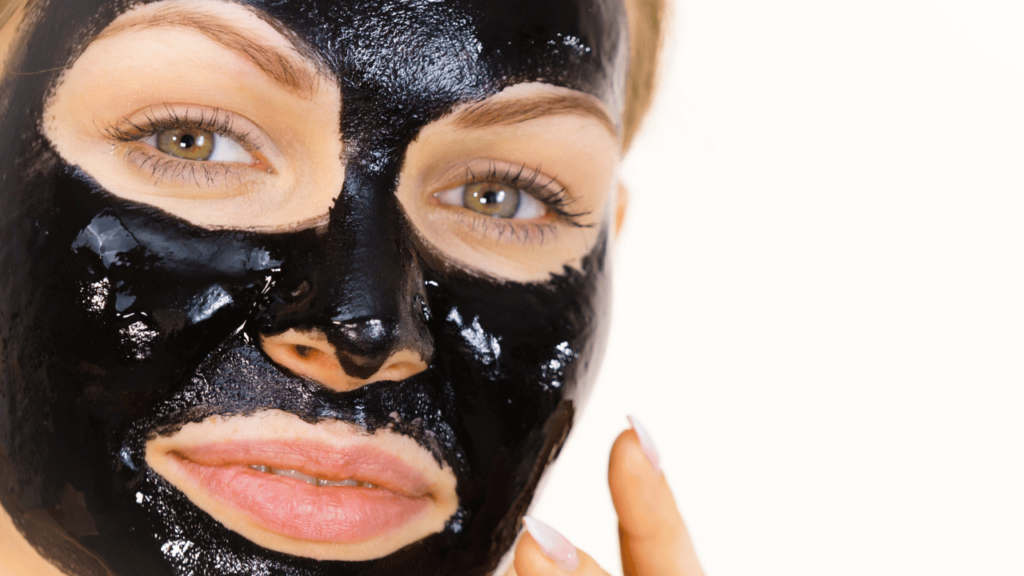
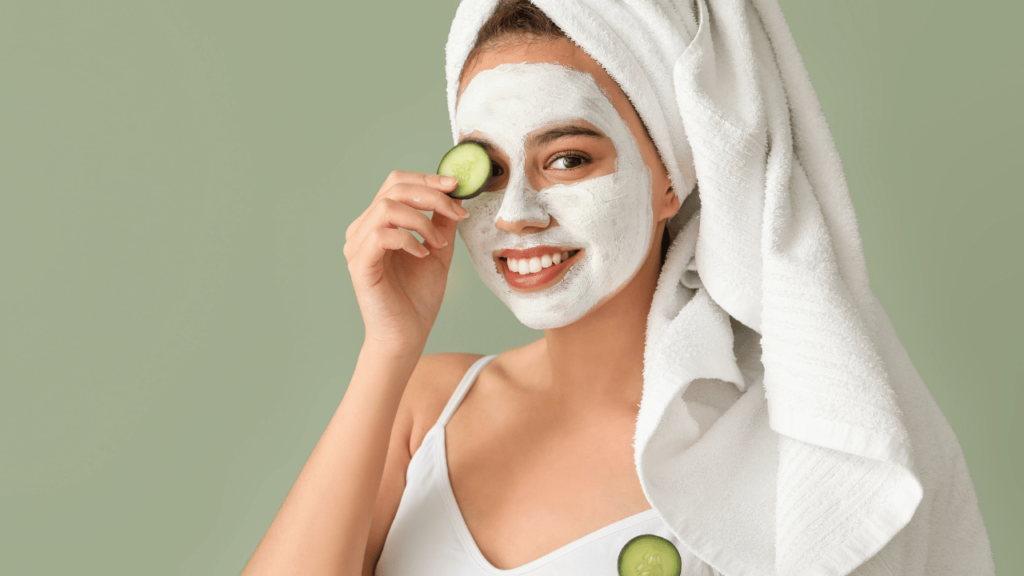

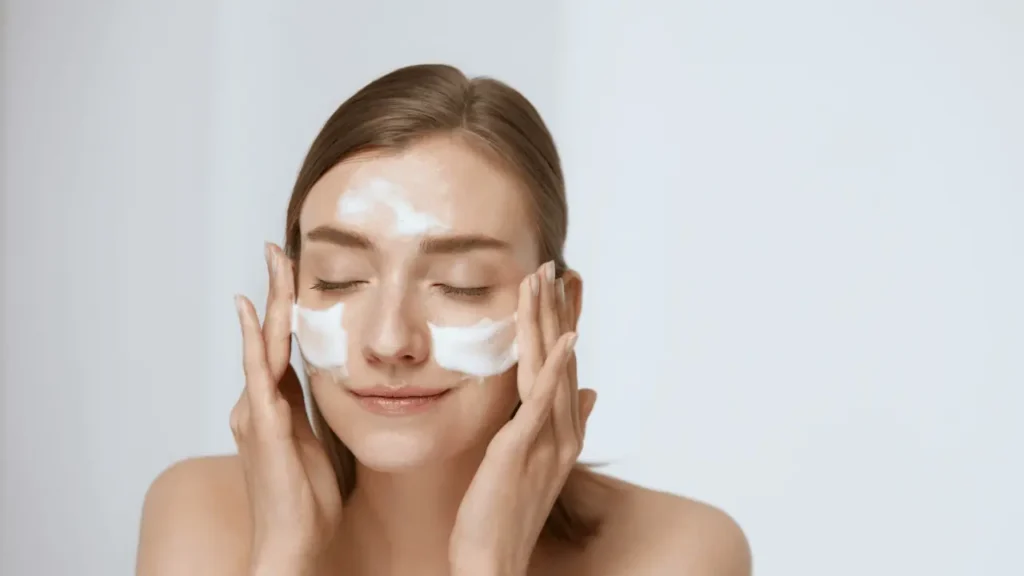
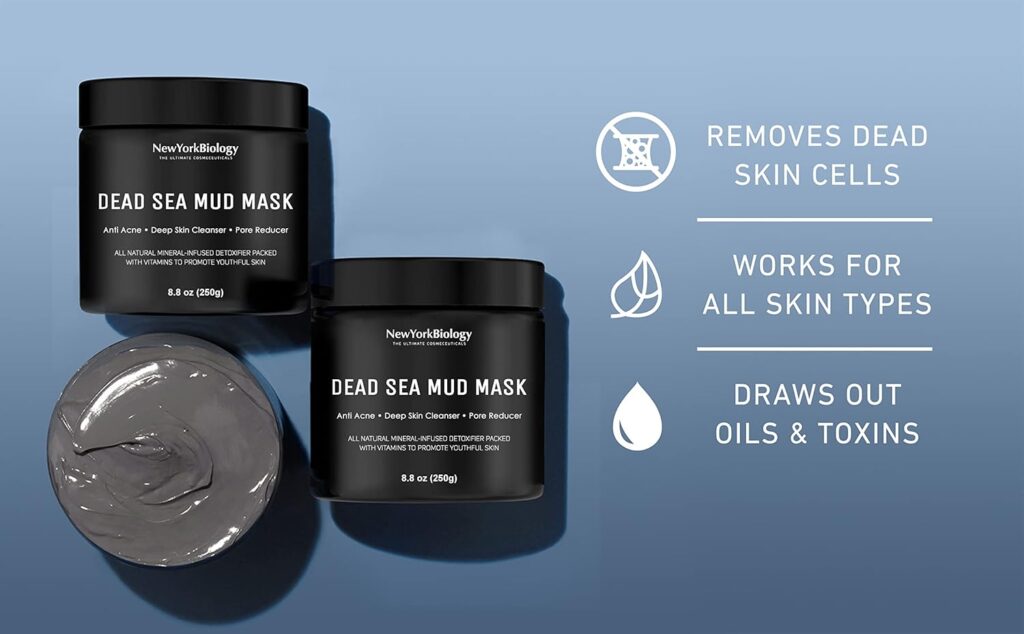
Pingback: What Are Clay Cleansers and How Do They Work?
Pingback: What are Oil Cleansers? How to use it?
Pingback: Cream Cleansers: The Ultimate Gentle Solution for Fresh, Hydrated Skin
Pingback: Foaming Cleansers: Benefits, Tips, and Top Picks for Every Skin Type
Pingback: The Benefits of Gel Cleansers, Ingredients, and Usage Tips - Productsforme
Pingback: How to Choose the Best Cleanser for Oily Skin?
Pingback: The Secret to Choosing Best Cleanser for Dry Skin
Pingback: La Roche-Posay vs CeraVe Hydrating Facial Cleanser: Which One is Right for Your Skin?
Pingback: How to Choose the Right Cleanser for Combination Skin
Pingback: Top 10 Skincare Products for a Glowing Skin
Pingback: Finding Your Perfect Match: The Best Moisturizers for Every Skin Type